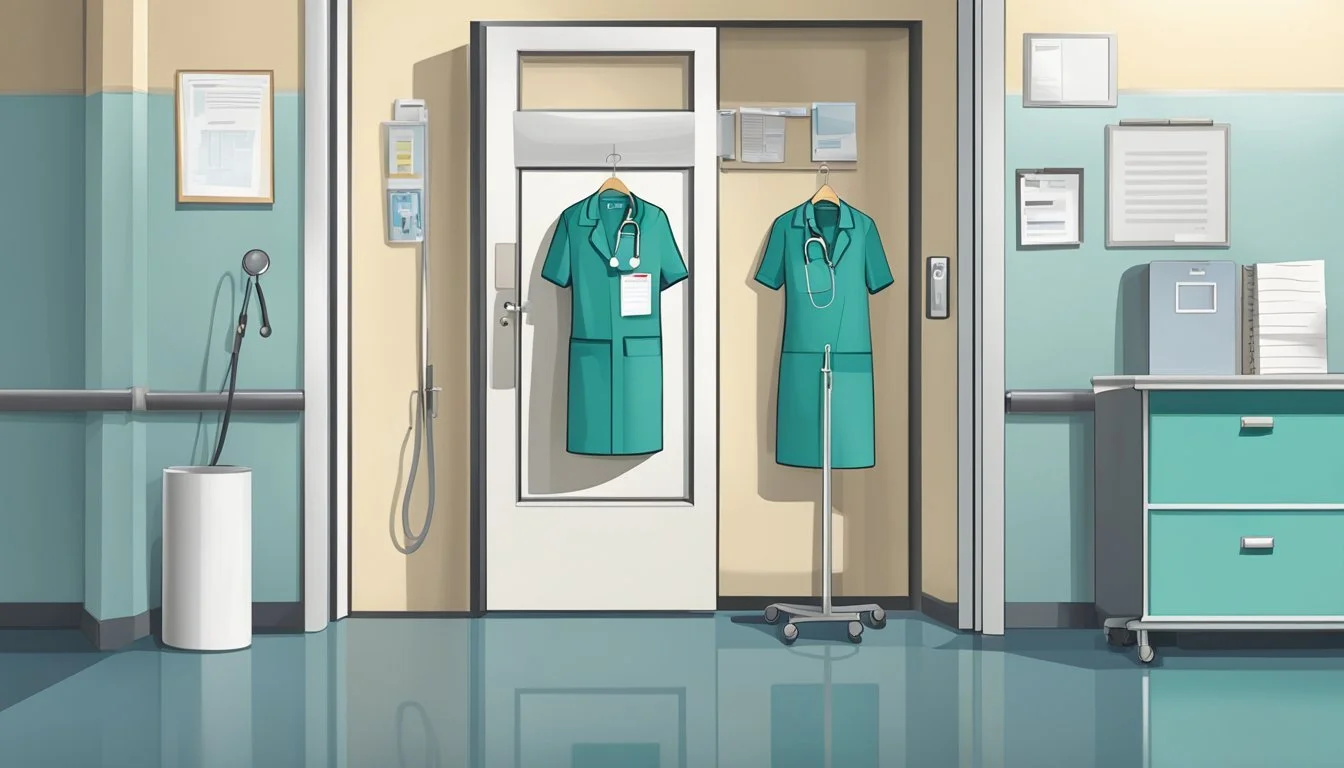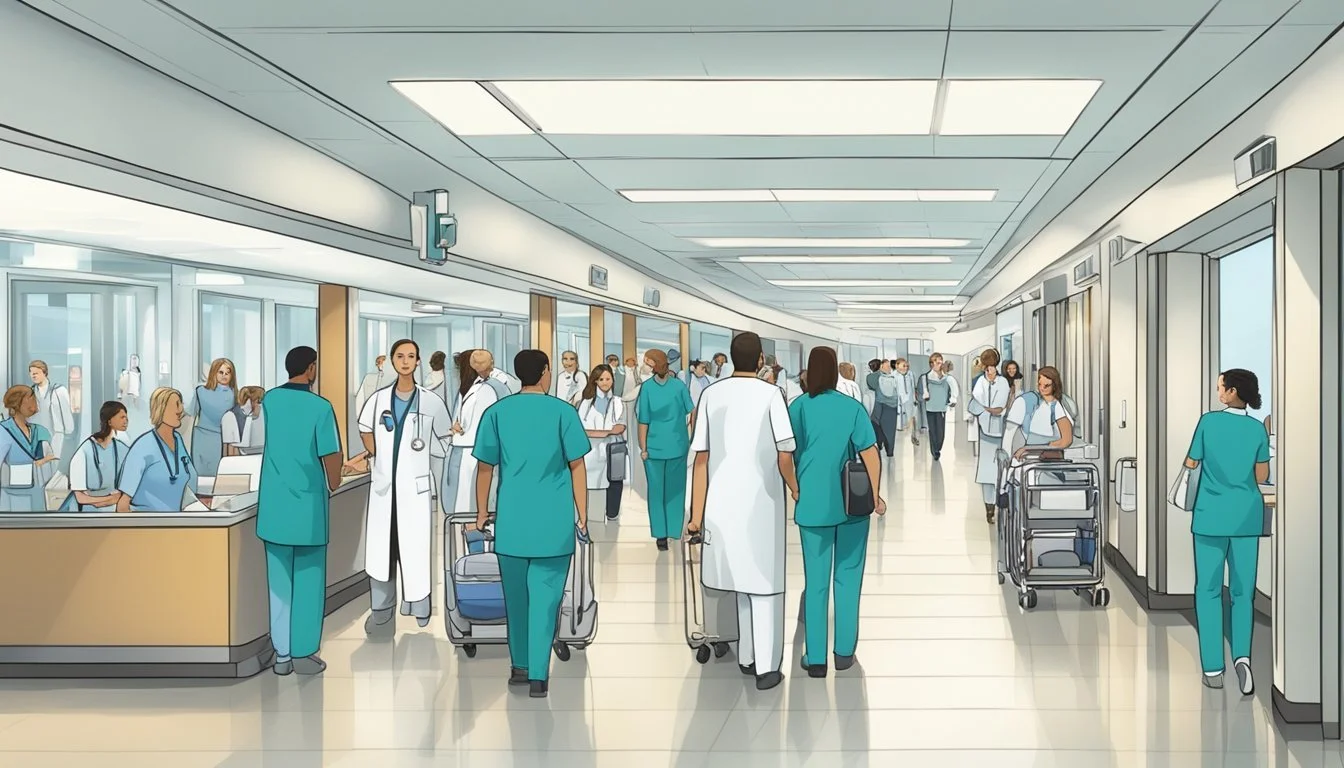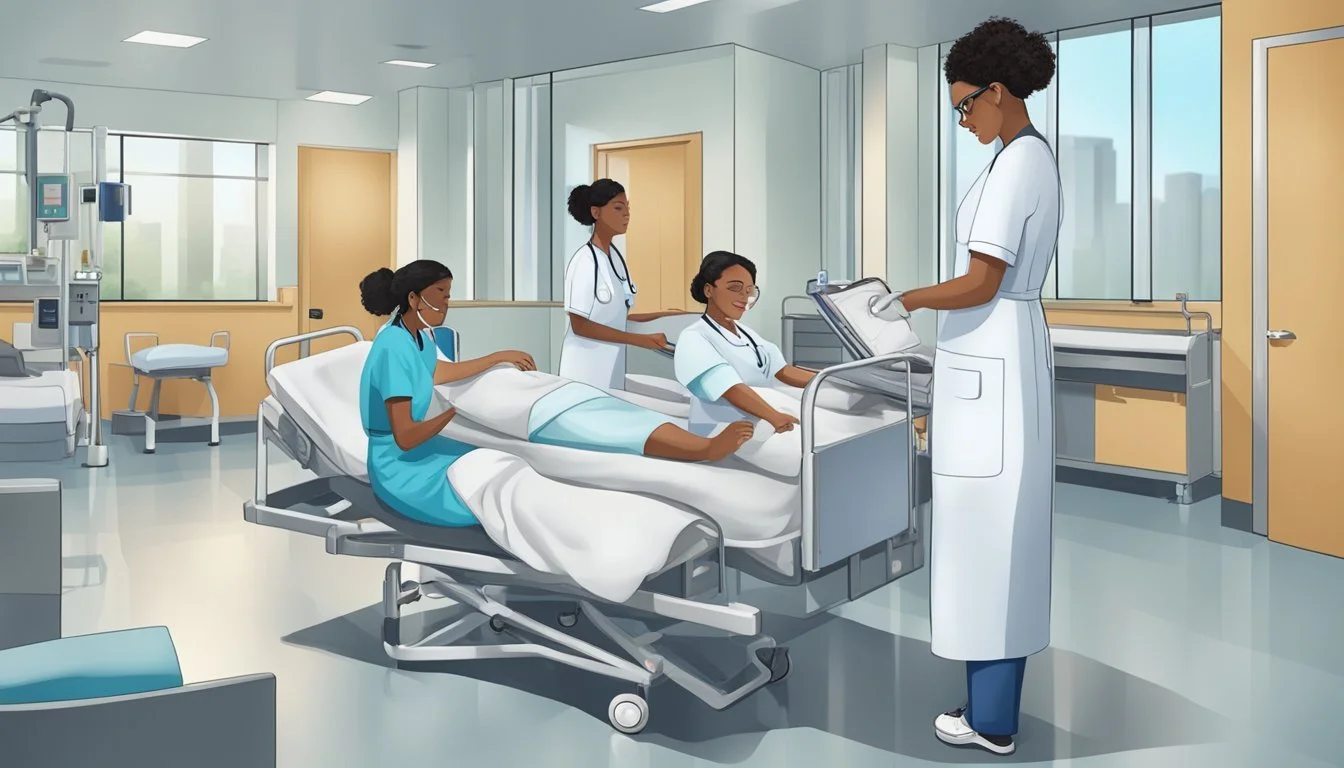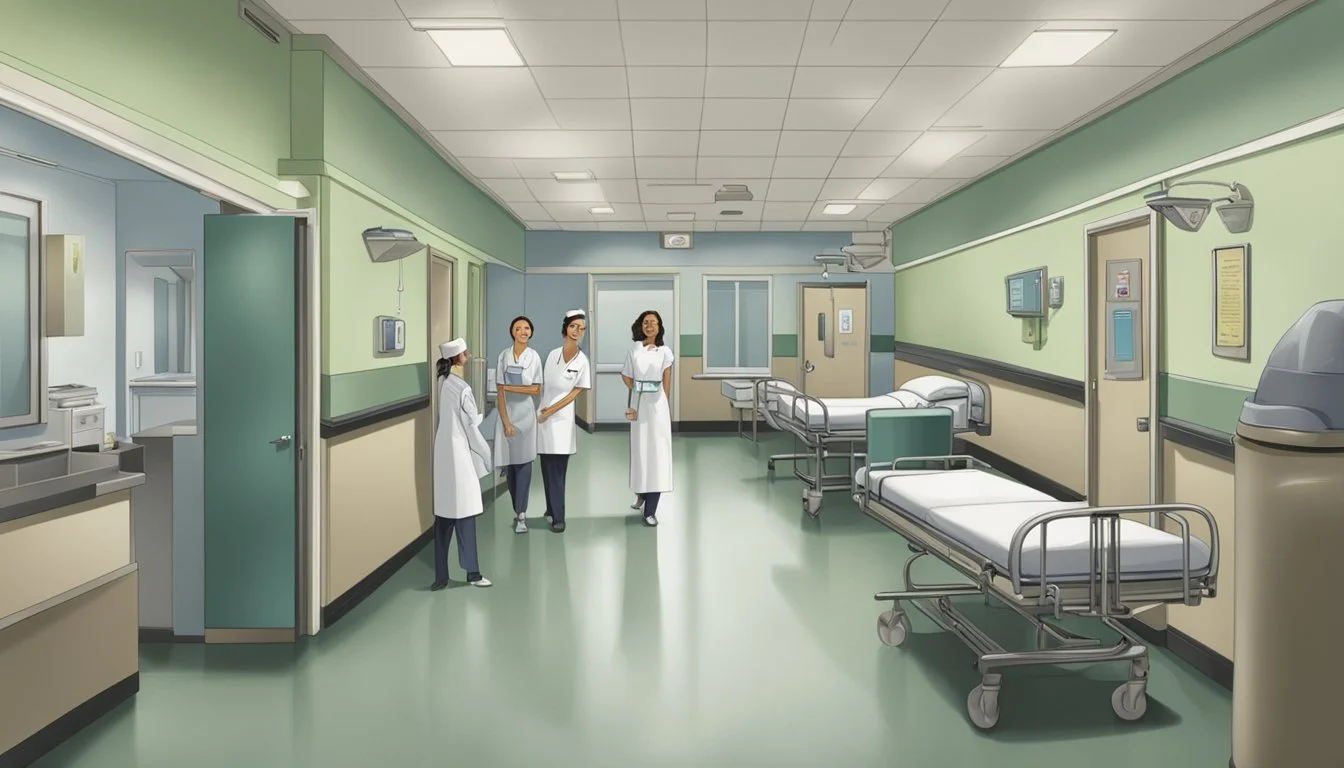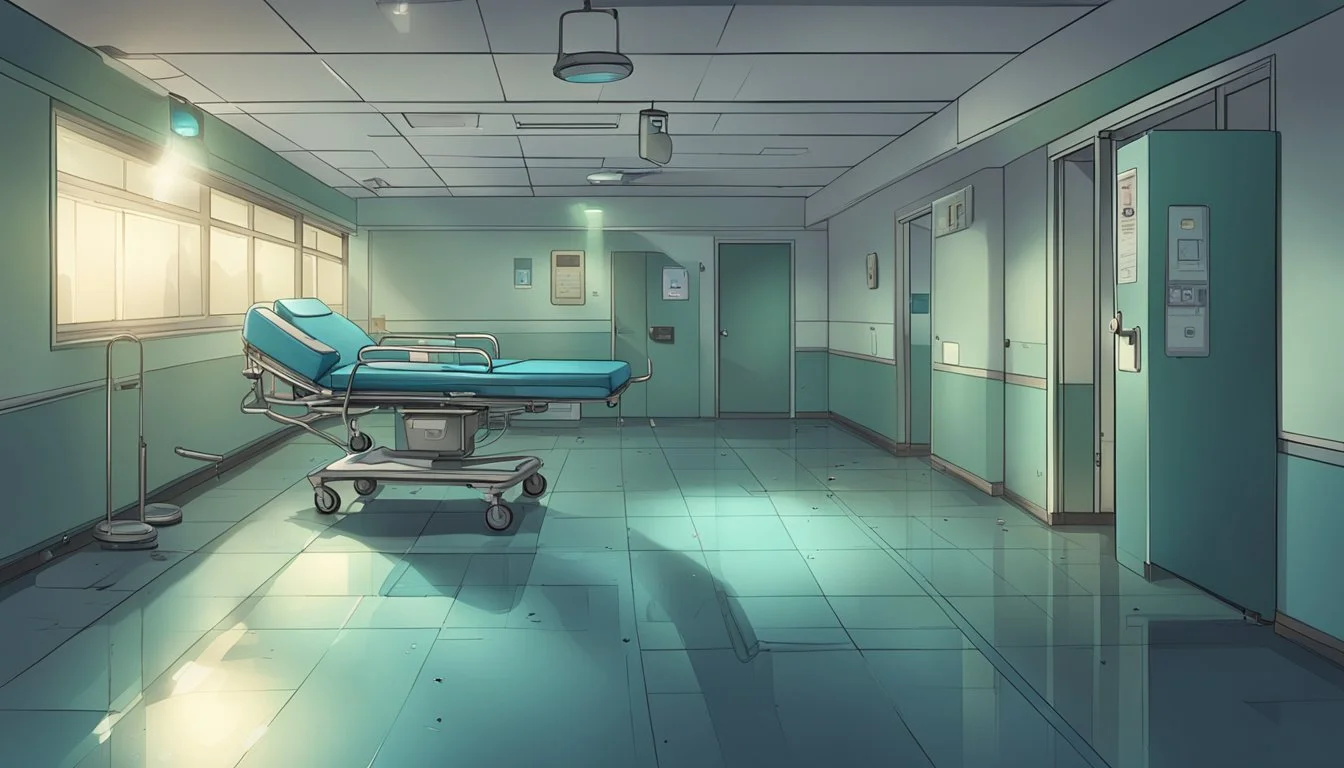The Good Nurse by Charles Graeber: A Chilling Expose of Healthcare Serial Killer
Charles Graeber's "The Good Nurse" delves into the chilling true story of Charles Cullen, a nurse who became one of America's most prolific serial killers. The book meticulously chronicles Cullen's sixteen-year killing spree across multiple hospitals in the Northeast United States.
Graeber's investigative journalism uncovers how Cullen exploited systemic flaws in the healthcare system to continue his murderous activities undetected for years. The author's detailed research and interviews with key figures provide a comprehensive look at the case, including the efforts of law enforcement and fellow nurses to bring Cullen to justice.
"The Good Nurse" not only recounts the horrific crimes but also examines broader issues in the medical field. It raises important questions about patient safety, hospital protocols, and the potential for abuse within healthcare institutions. Graeber's compelling narrative style transforms this true crime story into a gripping exploration of medicine, madness, and murder.
Profile of Charles Cullen
Charles Cullen was a nurse and convicted serial killer who murdered numerous patients over his 16-year career. His troubled background, ability to move between hospitals, and method of killing through medication overdoses earned him the nickname "Angel of Death."
Background and Early Life
Born in West Orange, New Jersey in 1960, Charles Cullen had a difficult childhood marked by tragedy. His father died when he was just seven months old. As a youth, Cullen struggled with depression and made several suicide attempts. He joined the U.S. Navy in 1978 and served on a submarine team before being discharged in 1984.
After leaving the military, Cullen enrolled in nursing school. He graduated from Mountainside Hospital School of Nursing in 1986 and began working as a registered nurse. This career choice would ultimately provide the means for his crimes.
Nursing Career
Cullen worked at various hospitals and healthcare facilities in New Jersey and Pennsylvania between 1988 and 2003. Despite being fired or forced to resign from multiple jobs due to suspicious behavior, he was able to find new employment repeatedly.
His pattern involved:
Working in intensive care units
Accessing medication dispensing systems
Administering lethal doses to patients
Cullen often targeted elderly or seriously ill patients. He exploited flaws in hospital systems and a lack of communication between facilities to continue his killing spree undetected for years.
The Angel of Death
Cullen's murderous activities earned him the sinister moniker "Angel of Death." He killed patients by administering lethal overdoses of medications like digoxin and insulin. His victims ranged from young adults to the elderly.
Key facts about Cullen's crimes:
Confessed to killing up to 40 patients
Suspected of causing hundreds of deaths
Arrested in 2003 after a colleague reported suspicious behavior
Pleaded guilty to 29 murders in 2004
Sentenced to 11 consecutive life terms
Cullen's case exposed serious flaws in the healthcare system's ability to track and prevent such crimes. It led to calls for improved background checks and communication between medical facilities to prevent similar tragedies in the future.
The Crimes of Charles Cullen
Charles Cullen, a former nurse, committed a series of murders across multiple hospitals in New Jersey and Pennsylvania. His crimes spanned nearly two decades and involved the deliberate administration of lethal doses of medications to patients.
Hospitals and Victims
Cullen worked at nine hospitals and one nursing home between 1988 and 2003. He targeted patients of various ages and medical conditions. Cullen primarily used insulin and digoxin to kill his victims.
The exact number of his victims remains unknown. Estimates range from 40 to potentially 400 deaths. Cullen's victims included both critically ill patients and those expected to recover.
Many of his crimes went undetected due to the nature of hospital settings, where deaths are not uncommon.
Investigation and Arrest
Somerset Medical Center in New Jersey noticed suspicious patient deaths in 2003. They alerted authorities, leading to an investigation.
Detectives Tim Braun and Danny Baldwin led the case. They faced challenges due to incomplete hospital records and the difficulty of proving deliberate medical harm.
A breakthrough came when Amy Loughren, Cullen's coworker, agreed to assist the investigation. She provided crucial information about medication discrepancies.
Cullen was arrested in December 2003 at a restaurant in New Jersey.
Confession and Conviction
After his arrest, Cullen confessed to killing up to 40 patients. He claimed he acted out of mercy to end patients' suffering.
Investigators believe the true number of victims could be much higher. Cullen pleaded guilty to 29 murders and 6 attempted murders in New Jersey and Pennsylvania.
In 2006, he received 11 consecutive life sentences in New Jersey. He later received an additional 6 life sentences in Pennsylvania.
Cullen's case exposed significant flaws in hospital hiring practices and record-keeping. It led to reforms in the healthcare industry to prevent similar incidents in the future.
Literary Exploration
Charles Graeber's "The Good Nurse" showcases meticulous investigative journalism and a compelling narrative style. The author's extensive research and interviews provide a foundation for the true crime account, while his writing approach brings the story to life.
Research and Interviews by Charles Graeber
Graeber conducted in-depth interviews with key figures, including Charles Cullen, the nurse-turned-serial killer. He spoke with law enforcement officials, medical professionals, and victims' families to gather a comprehensive understanding of the case. The author's background as a contributor to New York Magazine aided his investigative skills.
Graeber's research extended beyond interviews. He examined court documents, medical records, and police reports to verify facts and build a detailed timeline of events. This thorough approach allowed him to piece together Cullen's criminal history across multiple hospitals.
Writing Style and Narrative
Graeber employs a journalistic yet engaging writing style in "The Good Nurse." He presents facts clearly while maintaining a gripping narrative flow. The author's use of descriptive language helps readers visualize scenes and understand complex medical concepts.
The book's structure alternates between Cullen's personal history and the investigation that led to his arrest. This approach creates tension and keeps readers invested in the story. Graeber's attention to detail brings characters to life, from the dedicated detectives to the hospital staff who enabled Cullen's crimes.
Graeber's neutral tone allows readers to form their own opinions about the case. He avoids sensationalism, instead focusing on presenting accurate information and exploring the systemic failures that allowed Cullen to continue his killing spree for years.
Amy Loughren's Role
Amy Loughren played a crucial part in uncovering Charles Cullen's crimes and bringing him to justice. Her actions as a nurse and confidential informant were instrumental in the investigation and eventual conviction of the serial killer.
Friendship with Cullen
Amy Loughren and Charles Cullen worked together as nurses at Somerset Medical Center in New Jersey. They developed a close friendship, with Cullen often helping Loughren during her shifts. Loughren, a single mother of two daughters, was dealing with a heart condition that made her work challenging.
Cullen became a supportive colleague, assisting her with patient care and covering for her when needed. Their bond grew stronger over time, with Cullen even offering to help Loughren obtain health insurance.
Becoming a Confidential Informant
When detectives approached Loughren with suspicions about Cullen, she was initially skeptical. However, as she examined patient records, she noticed alarming patterns in Cullen's behavior. Loughren agreed to cooperate with law enforcement as a confidential informant.
She wore a wire to record conversations with Cullen, gathering crucial evidence. This decision put Loughren in a difficult position, balancing her friendship with Cullen against her duty to protect patients.
Her cooperation was vital in building a case against Cullen.
Contribution to the Case
Loughren's role in the investigation was pivotal. She provided investigators with insider knowledge of hospital procedures and medication practices. Her understanding of medical records helped identify suspicious patterns in patient deaths.
Loughren's recorded conversations with Cullen proved instrumental in his eventual confession. Her bravery in confronting Cullen directly led to his admission of guilt.
Her actions ultimately led to Cullen's arrest and conviction, potentially saving countless lives. Loughren's courage and dedication exemplify the highest standards of nursing ethics and patient advocacy.
Implications for the Medical System
Charles Graeber's "The Good Nurse" exposes critical flaws in hospital policies and risk management practices. The book highlights systemic issues that allowed a serial killer to operate undetected within healthcare facilities for years.
Hospital Policies
Hospitals must implement stricter background checks and reference verification processes for new hires. Regular performance evaluations and drug testing should be mandatory for all staff. Improved documentation and reporting systems are essential to track medication administration and flag suspicious patterns.
Whistleblower protection policies need strengthening to encourage staff to report concerns without fear of retaliation. Hospitals should establish clear protocols for investigating patient deaths and unexpected complications.
Enhanced security measures, such as surveillance cameras in medication storage areas, can deter potential misconduct. Regular audits of medication inventories and usage logs are crucial to detect discrepancies early.
Risk Management
Risk managers play a vital role in identifying and mitigating potential threats to patient safety. They must develop comprehensive strategies to address vulnerabilities in hospital systems and procedures.
Regular risk assessments should be conducted to identify potential weak points in patient care processes. Risk managers should work closely with human resources to develop robust hiring and screening procedures.
Implementing a culture of safety is essential, where staff feel empowered to report concerns without fear of repercussions. Risk managers should facilitate open communication channels between departments to share information about potential risks.
Continuous education and training programs for staff on recognizing and reporting suspicious behavior are crucial. Risk managers must also ensure hospitals have adequate insurance coverage to protect against potential liabilities.
Representation in Media
Charles Graeber's book "The Good Nurse" has inspired various media adaptations and related works. These include a high-profile Netflix film, documentary productions, and extensive journalistic coverage.
Netflix Adaptation
Netflix released "The Good Nurse" as a feature film in 2022. The movie stars Eddie Redmayne as Charles Cullen and Jessica Chastain as Amy Loughren. It closely follows Graeber's book, dramatizing Cullen's crimes and eventual capture.
The film received critical acclaim for its performances and taut direction. It brought wider attention to the case and sparked discussions about patient safety and healthcare system failures.
Documentary Films
"Capturing the Killer Nurse" is a notable documentary about the Charles Cullen case. Released alongside Netflix's dramatized version, it offers a fact-based examination of Cullen's crimes.
The documentary features interviews with key figures, including Amy Loughren and investigators involved in the case. It provides a more in-depth look at the real events and people portrayed in the Netflix film.
Related Journalism and Publications
Graeber's work on "The Good Nurse" began with his 2007 article "The Tainted Kidney" in New York Magazine. This piece laid the groundwork for his later book.
The New York Times and other major publications have covered the Cullen case extensively. These articles often reference Graeber's book as a definitive source.
Wired magazine published a detailed piece on the case, exploring the technological aspects of tracking Cullen's activities across multiple hospitals.
Book Editions and Formats
"The Good Nurse" by Charles Graeber is available in multiple formats to suit different reading preferences. Readers can choose from traditional print editions or opt for digital and audio versions.
Hardcover and Paperback
The hardcover edition of "The Good Nurse" was initially released, providing a durable option for collectors and libraries. A paperback version followed, offering a more affordable and portable choice for readers.
Both editions feature the full text of Graeber's gripping true crime narrative. The cover designs may vary between printings, but typically showcase imagery related to the medical setting of the story.
Audiobook
An audiobook version of "The Good Nurse" allows listeners to experience the chilling tale while multitasking or during commutes. Professional narrators bring Graeber's words to life, enhancing the suspense and tension of the story.
The audiobook is available through major platforms like Audible. Its runtime typically spans several hours, providing an immersive listening experience. Some editions may include bonus content, such as author interviews or additional commentary on the case.
Cultural Impact and Reception
"The Good Nurse" by Charles Graeber made significant waves in the true-crime genre and sparked important discussions about healthcare safety. The book's revelations about Charles Cullen's crimes and the systemic failures that enabled them resonated with readers and critics alike.
True-Crime Genre Influence
Graeber's work elevated the true-crime genre, setting a new standard for investigative journalism in book form. The meticulous research and compelling narrative style attracted readers beyond the typical true-crime audience. "The Good Nurse" helped popularize healthcare-related true-crime stories, inspiring similar works and adaptations.
The book's success led to increased interest in stories exploring medical malpractice and institutional negligence. Its impact extended to television and film, culminating in a Netflix adaptation that premiered at the Toronto International Film Festival.
Public and Critical Response
"The Good Nurse" received widespread acclaim from both readers and critics. The New York Times praised Graeber's "powerful" storytelling and "painstaking reporting." Many reviewers highlighted the book's ability to balance factual accuracy with narrative engagement.
Public reaction to the book was strong, with many expressing shock at the systemic failures exposed. It sparked debates about patient safety and healthcare industry practices. The story's real-life hero, nurse Amy Loughren, gained recognition for her role in stopping Cullen.
Critics lauded Graeber's ability to humanize the victims while avoiding sensationalism. The book's success demonstrated the public's appetite for well-researched, thoughtfully presented true-crime narratives.
Legal and Ethical Considerations
Charles Graeber's investigation into Charles Cullen's crimes raised complex legal and ethical issues. The book examines how privacy concerns intersected with public safety and explores the impact on victims' families as they sought justice.
Privacy and Ethics in Reporting
Graeber faced ethical dilemmas in reporting on Cullen's case. He had access to confidential police records, wire-tap recordings, and videotapes. This raised questions about privacy rights and responsible journalism.
The author conducted jailhouse conversations with Cullen. These interactions provided valuable insights but required careful handling to avoid compromising the ongoing legal proceedings.
Graeber had to balance the public's right to know with respect for victims and their families. He made editorial decisions about which details to include or omit from the book.
Victims' Families and Justice System Interaction
The families of Cullen's victims played a crucial role in seeking justice. They pressured law enforcement to investigate more thoroughly when initial inquiries stalled.
Many families faced frustration with the slow pace of the justice system. Some felt the hospitals where Cullen worked were not held sufficiently accountable.
Police detectives worked closely with victims' relatives to gather evidence. This cooperation was essential in building the case against Cullen.
The book highlights how the families' persistence helped overcome institutional barriers within the healthcare and legal systems. Their advocacy efforts led to policy changes aimed at preventing similar crimes in the future.
Aftermath and Legacy
Charles Cullen's crimes profoundly impacted the nursing profession and healthcare industry. His actions led to significant reforms and efforts to honor those who lost their lives.
Changes in Nursing Regulations
Cullen's case exposed major flaws in hospital hiring practices and oversight. Many states implemented stricter background checks for healthcare workers. New Jersey passed legislation requiring hospitals to report suspicious deaths and drug diversions.
Improved tracking systems were developed to monitor nurses' employment histories across state lines. Some facilities implemented enhanced drug inventory controls and increased supervision of medication administration.
These changes aimed to prevent future serial killers from operating within the healthcare system. However, critics argued that more comprehensive reforms were still needed to address systemic issues.
Memory and Commemoration of Victims
Families of Cullen's victims formed support groups and advocated for patient safety improvements. Several hospitals erected memorials to honor those who died.
Annual remembrance events were organized in New Jersey and Pennsylvania. These gatherings provided a space for healing and raised awareness about healthcare-related deaths.
Some families established scholarships in their loved ones' names for nursing students committed to ethical practice. These efforts sought to create a positive legacy from the tragedy and prevent similar incidents in the future.
The Creative Team Behind the Screen Adaptation
The Netflix adaptation of "The Good Nurse" brought together a talented group of actors and filmmakers. Their collaborative efforts transformed Charles Graeber's book into a gripping thriller for the screen.
Casting Choices
Jessica Chastain took on the role of Amy Loughren, the nurse who helped uncover Charles Cullen's crimes. Eddie Redmayne portrayed Cullen, the serial killer at the center of the story. Both actors are Academy Award winners, bringing gravitas to their roles.
Chastain's performance captured Amy's strength and vulnerability as a single mother facing health issues. Redmayne's portrayal of Cullen was chilling and nuanced, revealing the complexities of the killer's psychology.
The casting aimed to create a balance between the two leads, allowing their on-screen dynamic to drive the narrative.
Behind-the-Scenes with Directing and Writing
Tobias Lindholm directed "The Good Nurse," bringing his experience with tense dramas to the project. Lindholm's approach focused on creating a realistic atmosphere, emphasizing the psychological aspects of the story.
Krysty Wilson-Cairns adapted Graeber's book for the screen. Her screenplay streamlined the complex narrative, centering on Amy's perspective and her relationship with Cullen.
The director and writer worked closely to maintain the factual integrity of the events while crafting a compelling cinematic experience. They aimed to balance the thriller elements with the human drama at the heart of the story.


